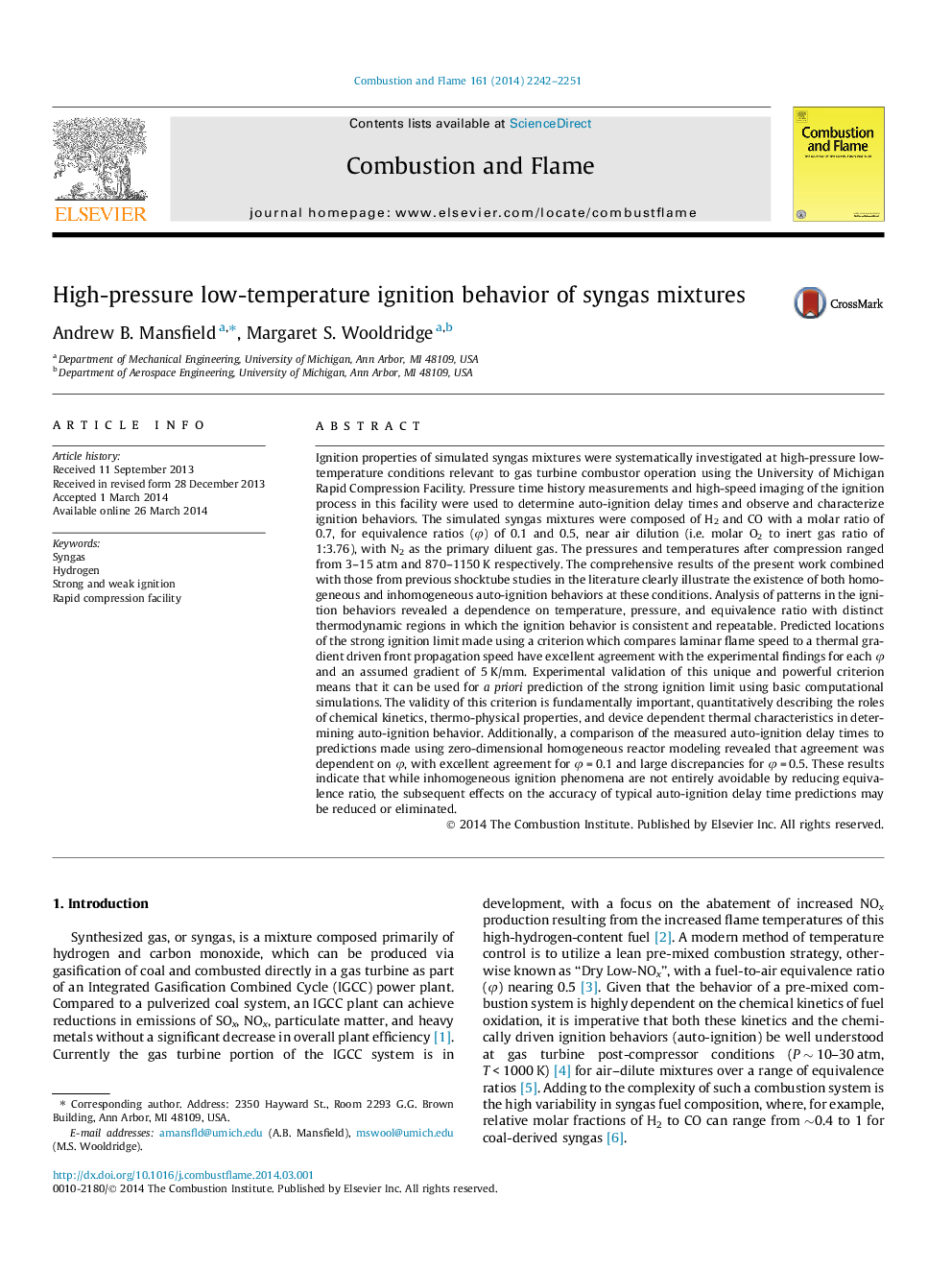| کد مقاله | کد نشریه | سال انتشار | مقاله انگلیسی | نسخه تمام متن |
|---|---|---|---|---|
| 168549 | 457938 | 2014 | 10 صفحه PDF | دانلود رایگان |
Ignition properties of simulated syngas mixtures were systematically investigated at high-pressure low-temperature conditions relevant to gas turbine combustor operation using the University of Michigan Rapid Compression Facility. Pressure time history measurements and high-speed imaging of the ignition process in this facility were used to determine auto-ignition delay times and observe and characterize ignition behaviors. The simulated syngas mixtures were composed of H2 and CO with a molar ratio of 0.7, for equivalence ratios (φ) of 0.1 and 0.5, near air dilution (i.e. molar O2 to inert gas ratio of 1:3.76), with N2 as the primary diluent gas. The pressures and temperatures after compression ranged from 3–15 atm and 870–1150 K respectively. The comprehensive results of the present work combined with those from previous shocktube studies in the literature clearly illustrate the existence of both homogeneous and inhomogeneous auto-ignition behaviors at these conditions. Analysis of patterns in the ignition behaviors revealed a dependence on temperature, pressure, and equivalence ratio with distinct thermodynamic regions in which the ignition behavior is consistent and repeatable. Predicted locations of the strong ignition limit made using a criterion which compares laminar flame speed to a thermal gradient driven front propagation speed have excellent agreement with the experimental findings for each φ and an assumed gradient of 5 K/mm. Experimental validation of this unique and powerful criterion means that it can be used for a priori prediction of the strong ignition limit using basic computational simulations. The validity of this criterion is fundamentally important, quantitatively describing the roles of chemical kinetics, thermo-physical properties, and device dependent thermal characteristics in determining auto-ignition behavior. Additionally, a comparison of the measured auto-ignition delay times to predictions made using zero-dimensional homogeneous reactor modeling revealed that agreement was dependent on φ, with excellent agreement for φ = 0.1 and large discrepancies for φ = 0.5. These results indicate that while inhomogeneous ignition phenomena are not entirely avoidable by reducing equivalence ratio, the subsequent effects on the accuracy of typical auto-ignition delay time predictions may be reduced or eliminated.
Journal: Combustion and Flame - Volume 161, Issue 9, September 2014, Pages 2242–2251
